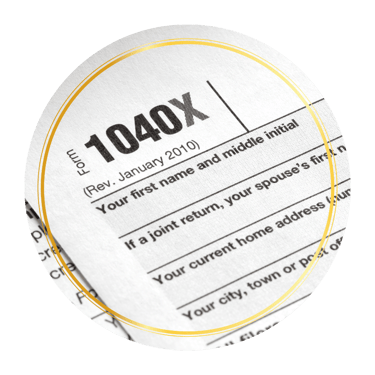
Amended Tax Returns
Tax season can often be a stressful time for individuals and businesses alike. It's not uncommon to make mistakes or overlook important information when filing your tax return. Fortunately, the Internal Revenue Service (IRS) provides options to correct errors or update previously filed returns. In this article, we'll explore two terms that often cause confusion: amended tax returns and superseded returns. Understanding the differences between these two concepts can help you navigate the tax-filing process with ease.
Amended Tax Returns
An amended tax return is a revised version of a previously filed tax return. It allows taxpayers to make changes to their original return if they discover errors, omissions, or need to update information that was reported incorrectly. You may need to file an amended return if you realize that you made a mistake in reporting your income, deductions, credits, or filing status.
Key points to understand about amended tax returns:
Purpose: The primary purpose of filing an amended return is to correct mistakes or provide additional information that could impact the amount of tax owed or the refund amount.
Time limit: The IRS generally allows taxpayers to file an amended return within three years from the original filing deadline or within two years from the date they paid the tax, whichever is later.
Form: To file an amended return, you'll need to complete Form 1040X, which is the Amended U.S. Individual Income Tax Return. It is essential to provide an explanation of the changes made and attach any supporting documentation.
Refund or additional tax due: Depending on the changes made, filing an amended return may result in a refund if you overpaid your taxes initially. Conversely, if you underpaid, you may owe additional taxes, including any penalties and interest.
Superseded Returns
A superseded return is a substitute return that replaces a previously filed tax return. This occurs when taxpayers realize that the original return they filed contains substantial errors, and they want to start fresh by submitting a corrected version.
Key points to understand about superseded returns:
Purpose: The purpose of filing a superseded return is to completely replace the original return, as if it was never filed. It is an opportunity to correct significant errors or omissions that would require substantial changes to the tax return.
Time limit: The IRS allows taxpayers to file a superseded return before the original return's due date, including any extensions. Once the due date has passed, you cannot file a superseding return but would need to file an amended return instead.
Procedure: To file a superseding return, you simply submit a complete and accurate new return for the same tax year, including all necessary schedules and forms. The IRS will consider the superseding return as the final filing and disregard the previous return.
Advantages: Filing a superseded return allows you to avoid the process of filing an amended return. It can provide peace of mind knowing that you have started fresh with an accurate and correct tax return.
In conclusion, amended tax returns and superseded returns are essential tools provided by the IRS to correct errors or update previously filed tax returns. Amended returns allow taxpayers to make specific changes to correct mistakes or include additional information, while superseded returns replace the entire original return. Understanding the key differences between these two concepts will help you navigate the tax-filing process effectively and ensure your tax returns are accurate. Remember, consulting a tax professional or seeking guidance from the IRS can provide further assistance if you have questions or need clarification on specific situations.


1040x & amended state returns
Amendment of business returns
Avoid potential understatement penalties by amending your returns as soon as you discover an error!
Transcript monitoring service is available


